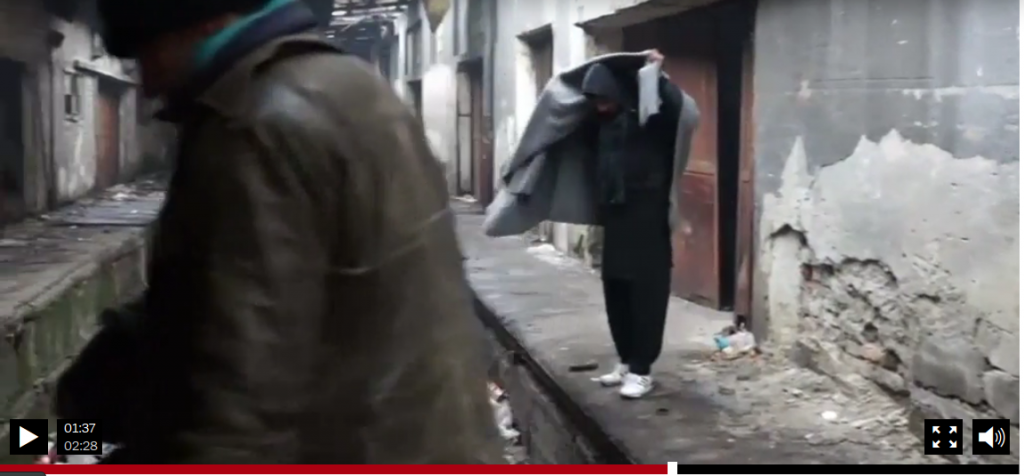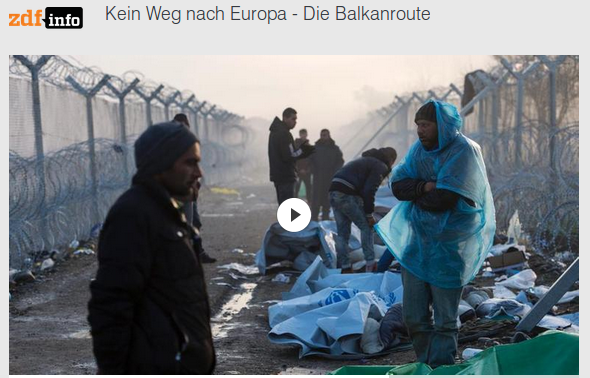Currently, there are some 7,300 refugees, asylum-seekers and migrants in the country. Of them, over 6,200 (85%) are accommodated in 17 government centres and the rest are still sleeping rough in the Belgrade city centre. Some 49% are from Afghanistan, 19% from Iraq, 10% each from Syria and Pakistan, 5% from Iran and 7% from other countries. 46% are children, 39% adult men and 15% adult women.
The authorities, supported by UNHCR and partners, arranged additional temporary emergency shelter by refurbishing a facility in Obrenovac near Belgrade, for voluntary relocation of refugees and migrants from Belgrade city centre. In support of the authorities’ efforts to put the facility into use as quickly as possible, UNHCR contributed all new clothing, blankets, bed sets and hygiene kits, cleaning services, and other items. To date, some 300 men and boys were moved from the city centre to Obrenovac. The authorities, UNHCR and partners continue working towards further expansion of shelter capacities there and to ensure that all necessary protection and other services, particularly to support the unaccompanied minors, will be provided to all current and future residents of the new centre.
In the North, the authorities offered asylum seekers near the border with Hungary to move to the Transit Centre in Subotica. As a result only around 20 asylum seekers remained outside the “transit zone” in Horgos and “transit zone” of Kelebija, waiting admission to Hungary.
According to the Ministry of Interior, 12,821 persons registered their intent to seek asylum in Serbia in 2016 while 574 submitted an official asylum application. In 2016, the authorities granted refugee status to 19 and subsidiary protection to 23 persons. 40 asylum applications were rejected.
Category Archives: Newspaper Articles
Refugee winter crisis: Serbia accused of illegal mass deportations
Humanitarian organisations have accused Serbia of forcing hundreds of refugees back towards Macedonia and Bulgaria, refusing them help in freezing temperatures and breaking international law. Nikola Kovacevic, of the Belgrade Centre for Human Rights, said his group had multiple complaints of so-called “pushback” campaigns against refugees, many of whom are from Syria and Iraq, to get them out of Serbia. Complainants say they have been bussed to the border, had their papers confiscated and left in sub-zero temperatures, forcing them to cross into neighbouring countries to find help. One Syrian family stated that their official asylum seeker papers were torn up in their faces as they were ushered towards the border. Police and the army have been accused of complicity, but Kovacevic said it was difficult to know exactly who was involved in specific incidents as border forces are a combination of army and police.”Our colleagues on the field received about 20 complaints from refugees about illegal mass deportations. The assessment is that a total of 700-1,000 refugees were illegally deported to Macedonia and Bulgaria since September,” he told Middle East Eye.
Influx of refugees leaves Belgrade at risk of becoming ‘new Calais’
A freezing and squalid Belgrade railway depot where up to 2,000 people are seeking shelter from the bitter Serbian winter risks becoming a “new Calais” for refugees and migrants abandoned by European authorities, the humanitarian group Médecins Sans Frontières has warned.Children as young as eight are struggling to survive temperatures that have plunged to -16C this week, with no running water or sanitation.
ARD: Balkanroute – Flüchtlinge in der Sackgasse
Seit Einführung strengerer Grenzkontrollen zu Bulgarien und Mazedonien durch gemischte Militär- und Polizeiteams Ende Juli konnte man laut Behördenangaben gut 15.800 Personen stoppen. Seit Kurzem beteiligen sich auch Sicherheitskräfte aus Ungarn, der Slowakei und Tschechien an diesen gemischten Teams. Die jüngste Drohung des türkischen Präsidenten Recep Tayyip Erdogan über eine mögliche erneute Öffnung der Grenzübergänge für Flüchtlinge wird auch in Belgrad aufmerksam verfolgt. Serbien habe einen „Plan B“ parat, sollte es dazu kommen, berichtete die Tageszeitung „Vecernje novosti“ unter Berufung auf Regierungskreise. Dem Blatt zufolge dürfte in einem solchen Fall erneut der von Regierungschef Aleksandar Vucic wiederholt abgelehnte Zaunbau an den südlichen Grenzen Serbiens in Erwägung gezogen werden. „Wir würden unsere Grenze wirkungsvoll schützen“, wurde Aleksandar Vulin, der für die Flüchtlingskrise zuständige Minister für Arbeits-und Sozialfragen zitiert.Vulin wollte sich zu den Details nicht äußern. In Serbien wird die Flüchtlingszahl von den Behörden derzeit auf etwa 7.000 geschätzt. Rund 5.200 Personen sind landesweit in mehreren Aufnahmezentren untergebracht, der Rest lebt unter freiem Himmel meist im Stadtzentrum Belgrads. Wir konnten in Belgrad einen Flüchtling aus Afghanistan der seit mehreren Monaten festsitzt mit der Kamera begleiten:
SPIEGEL TV: Flüchtlinge in Serbien – Die Vergessenen
Refugees fall victim to people “ping pong” in the Balkans
In an abandoned warehouse at the back of a bus station in Belgrade, several hundred migrants and refugees, most of them young men from Afghanistan, spend their days trying to keep warm and talking about how they will leave Serbia and continue their journeys towards Western Europe. Officially, since March, there has been no way for migrants and asylum seekers to travel north from Greece other than by successfully applying for family reunification or relocation. But there are options for those who can afford it. Smugglers are charging 1,500 euros to move people from Greece (usually Thessaloniki) to Belgrade, and the same amount again to get them to Western Europe. But many only get as far as the Balkans before running out of money or encountering draconian government policies. Push-backs, detentions, and deportations are common throughout the region, with some activists describing a “ping-pong situation” in which people are endlessly pushed back and forth.
Flüchtlinge sitzen an serbisch-kroatischer Grenze fest
Rund 100 Flüchtlinge sitzen nach einem 120 Kilometer langen Fußmarsch bei klirrender Kälte an der Grenze zwischen Serbien und dem EU-Land Kroatien fest. Die Flüchtlinge, vor allem junge Männer aus Pakistan und Afghanistan, hatten sich am Freitag in der serbischen Hauptstadt Belgrad auf den Weg zum Grenzübergang Sid gemacht. Serbische und kroatische Polizisten hinderten sie am Montag jedoch daran, über die Grenze in die Europäische Union zu gelangen.
ZDF-Doku: Kein Weg nach Europa – Die Balkanroute
“Gestrandet im Niemandsland”
01.08.2016 | taz.de
Die Stimmung im „Niemandsland“ am ungarisch-serbischen Grenzübergang Röszke ist noch gedrückter als sonst. Hunderte Flüchtlinge kampieren hier an dem Grenzzaun in einem Zeltlager. Die provisorischen Unterkünfte schützen nicht – weder vor der sengenden Hitze noch vor sintflutartigen Regenfällen.
Einige der Flüchtlinge haben einen Hungerstreik hinter sich, diesen aber in der vergangenen Woche abgebrochen. Mit ihrer Aktion wollten sie gegen die Flüchtlingspolitik der ungarischen Regierung protestieren, die auf Abschottung setzt.
“Flüchtlinge: Gestrandet auf der Balkanroute”
04.08.2016 | Deutschlandfunk
Rund 3.000 Flüchtlinge sind nach offiziellen Angaben zurzeit in Serbien gestrandet. Wer es bis nach Ungarn schafft, wird oft nach Serbien zurückgeschickt. Auch in Slowenien will man den Grenzzaun zu Kroatien noch nicht abbauen. Für viele Flüchtlinge bleibt nur das Warten – irgendwo im Niemandsland auf der Balkanroute.


